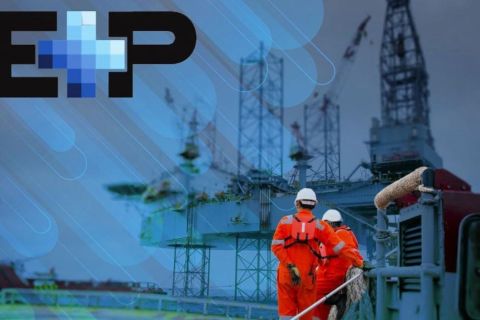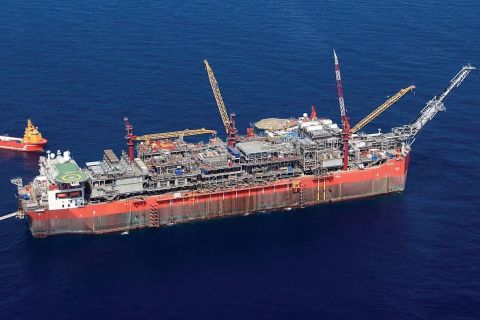With today’s operators requiring their wells to produce more hydrocarbons and for longer, the industry has seen a renewed focus on the wide variety of well and production testing technologies on the market.
These technologies are generating crucial information on the types of fluids wells are producing, the relative flow rates, and how long such wells are expected to produce. This information can provide vital input to the establishment of reliable reservoir analysis and longer term field production strategies.
Furthermore, with primary oil and gas recovery still at around the 20% mark and yet-proven reserves on the balance sheet often higher, there is a vital business case for putting in place the right well and production testing strategies to increase production. In many countries well testing plays a vital role in reserves estimation itself, with reserves classified as proven only after flow-testing has brought fluids to the surface.
Rising to the challenge
Given their importance, are today’s well and production testing technologies delivering operators the information they need?
While the last few years have seen a number of innovations, it is clear that limitations still remain. Many wellheads, for example, remain without instruments, and technologies such as portable test separators often tend to be very manual-focused. They are able to track a well’s performance sporadically but do not provide the steady stream of information required for real-time reservoir management.
Too many technologies also are adopted on an ad hoc basis without looking at the bigger field-wide picture as well as taking into account specific field variables.
Any successful well and production testing strategy must be process-driven using a dynamic, loop-based process where well production is tracked from the wellbore to the separator. Information is then seamlessly fed back into the reservoir model for real-time reservoir management and improved well and production planning.
For this to be achieved, each technology component has a key role to play within an integrated framework that not only delivers real-time information but takes into account the very specific characteristics of each field.
Working in harmony
Surface test separators and their ability to separate fluids into water, oil, and gas phases comprise the first level of a typical well and production testing configuration.
In certain environments, however, such as where there are commingling or long pipelines, or in heavy oil, where fluids tend to separate poorly due to small density differences, multiphase meters – both topside and sub-sea – are playing an important complementary role, improving accuracy and providing reference measurements to be compared to those from test and production separators.
It is these multiphase meters – topside and closer to the wellhead subsea – that comprise the second and third levels of an integrated testing strategy and can be placed in a number of locations from the platform to the wellhead, retrievable choke bridge, jumper, or the manifold.
Multiphase meters do not require phase separation, negating the challenges caused by differences in density and allowing for continuous multiphase measurements in real time. In addition, through the detection of changes in multiphase composition at the subsea wellhead, rising water cuts can be immediately detected and addressed.
It is through a leveraging of its expertise in both separators and multiphase meters that Emerson has developed intelligent separator architecture that can operate the multiphase meters, manage well test results, and perform well allocation calculations based on these results. The integrated system includes key performance indicators for individual well production or injection rates as well as multiple wells and production/injection operations.
It is this kind of functionality that is part of an integrated approach to well and production testing. The new system helps asset teams bring focus to the wells that need attention; reduces unwanted shutdowns; and combines virtual metering, network modeling techniques, and engineering calculations to provide a robust well allocation system and improved real-time reservoir management.
Greater intelligence, automation
Another key challenge in well and production testing today is the ability to incorporate greater automation and intelligence into activities, minimize equipment requirements, and test different wells simultaneously. Again, an integrated approach is required. Emerson’s multiport flow selector well testing solution, for example, allows the selecting and diverting of well fluids from an individual well to a single test outlet, flow loop, or sampling device.
Connecting up to seven flow lines, the system allows the combined fluids to flow through a separate group outlet while simultaneously isolating specific wells for testing. Whenever well testing is to be performed, operators can simply issue a remote command to position the multiport flow selector to the desired well inlet. In this way well flow is not interrupted when switching lines for testing, automation is simplified through a single actuator, and operational and maintenance work is reduced.
Generating multiphase rates downhole
The flow from individual wells and well zones downhole has been a crucial piece of missing information. The need for this downhole information has increased with the move toward complex well architectures and extended-reach wells that require the pinpointing of production data not only from each wellhead but from each producing zone along the well path.
It is against this backdrop that Emerson has developed a new flow sensor system that can generate multiphase flow measurements from downhole in the well.
The system generates multiphase measurements including fluid fractionation and flow rates from either single-bore or multilateral well configurations. This enables operators to not only access vital information for well and production testing through the measuring of the individual flow zones of oil, gas, and water but also to control multiple production wells and establish optimum flow rate control.
Typical applications include zonal allocation in multizone wells where the downhole sensor allocates production from different zones, improved assessments of well productivity, and improved production logging that can provide more details on fluid distributions. If there is water breakthrough or gas encroachment in a particular well, for example, the problem can be detected early on, and only the branch of the well in question can be closed rather than the complete well.
The list goes on
There are many more elements of an integrated well and production testing strategy today.
There is sand and corrosion monitoring, with sand having the potential to directly erode completion components and impede wellbore access and optimal chemical dosing crucial for flow assurance.
There also is the need to protect well integrity through the monitoring of pressure increases in the B annulus of an oil well – the space located between different casing-strings where fluid can flow. A pressure buildup can have significant repercussions for well production and integrity, leading to a loss of casing integrity and the vertical migration of oil and gas. What is clear, however, is that the whole is very much more than the sum of its parts.
Recommended Reading
Deepwater Roundup 2024: Americas
2024-04-23 - The final part of Hart Energy E&P’s Deepwater Roundup focuses on projects coming online in the Americas from 2023 until the end of the decade.
E&P Highlights: April 1, 2024
2024-04-01 - Here’s a roundup of the latest E&P headlines, including new contract awards.
Remotely Controlled Well Completion Carried Out at SNEPCo’s Bonga Field
2024-02-27 - Optime Subsea, which supplied the operation’s remotely operated controls system, says its technology reduces equipment from transportation lists and reduces operation time.
Deepwater Roundup 2024: Offshore Australasia, Surrounding Areas
2024-04-09 - Projects in Australia and Asia are progressing in part two of Hart Energy's 2024 Deepwater Roundup. Deepwater projects in Vietnam and Australia look to yield high reserves, while a project offshore Malaysia looks to will be developed by an solar panel powered FPSO.
E&P Highlights: March 15, 2024
2024-03-15 - Here’s a roundup of the latest E&P headlines, including a new discovery and offshore contract awards.





